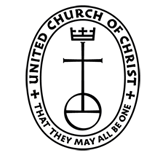Sermon: The New Testament and Beyond, Part 2 – sermon on August 16, 2015
Gospel of Thomas, sayings 2, 3 and 5
(2) Jesus said, “Let him who seeks continue seeking until he finds. When he finds, he will become troubled. When he becomes troubled, he will be astonished, and he will rule over the All.”
(3) Jesus said, “If those who lead you say to you, ‘See, the kingdom is in the sky,’ then the birds of the sky will precede you. If they say to you, ‘It is in the sea,’ then the fish will precede you. Rather, the kingdom is inside of you, and it is outside of you. When you come to know yourselves, then you will become known, and you will realize that it is you who are the sons and daughters of the living God. But if you will not know yourselves, you dwell in poverty and it is you who are that poverty.”
(5) Jesus said, “Recognize what is in your sight, and that which is hidden from you will become plain to you . For there is nothing hidden which will not become manifest.”
Gospel of Mary: 4: 22-27, 33-39
The Savior said, “All nature, all formations, all creatures exist in and with one another, and they will be resolved again into their own roots. For the nature of matter is resolved into the roots of its own nature alone. He who has ears to hear, let him hear.”
Peter said to him, “Since you have explained everything to us, tell us this also: What is the sin of the world?” The Savior said “There is no sin, but it is you who make sin when you do the things that are like the nature of adultery, which is called sin. That is why the Good came into your midst, to the essence of every nature in order to restore it to its root.”
When the Blessed One had said this, He greeted them all,saying, “Peace be with you. Receive my peace unto yourselves. Beware that no one lead you astray saying ‘Lo here or lo there!’ For the Son of Man is within you. Follow after Him! Those who seek Him will find Him. Go then and preach the gospel of the Kingdom. Do not lay down any rules beyond what I appointed you, and do not give a law like the lawgiver lest you be constrained by it.” When He said this He departed.
Sermon: The New Testament and Beyond, Part 2 by Rev. Doreen Oughton
Today we are on our second part of a 3-part sermon series called “The New Testament and Beyond.” Last week we talked about the New Testament – the number and types of books in it, how it developed, and what its purpose is – namely, to reveal God through the person and Spirit of Jesus the Christ. Today we are going to talk about two gospels that may also play a role in revealing Jesus to us, but that did not make it into the canon of scripture. We’ll talk specifically about the gospels of Thomas and of Mary Magdalene, from which you heard in this morning’s readings.
As is true with almost all of scripture, dating the gospel of Thomas is a best guess, and there are differences of opinion. Some guess as early as the year 40, earlier than any of the NT books, and some as late as 140. It differs from the canonized gospels in style. It makes no attempt to tell stories about Jesus, but is a list of his “sayings” or teachings. We talked last week a bit about the oral traditions of ancient times, and it is likely that these teachings made their way around to many of the new Christian communities. At some point it is hard to tell what is a source of what, and who follows who. Anyway, this book, or “codex,” was discovered in Egypt in 1945, one of 52 writings now known as the Nag Hammadi Library. Scholars speculate that these were buried in response to a letter from the Bishop Athanasius declaring a strict canon of scripture. The gospel of Thomas contains 114 sayings, and about half of them are similar to material in the gospels Matthew, Mark, Luke and/or John.
The Gospel of Mary was discovered in the late 1800’s, also in Egypt. It is believed to have been written early in the second century, after the year 100 – later than all the gospels of the New Testament. The fragment first discovered was written in Coptic, and then two other fragments were discovered that were written in Greek. It is very unusual to find three fragments of such an ancient text, and experts see this as evidence that the gospel of Mary was well distributed in early Christian times. Unfortunately, much of the codex did not survive, and we have only 8 pages – about half of the gospel. Chapters 1-3 are lost, as well as sections of chapters 5-8. But what remains is powerful. This gospel and its teachings were lost for about 1500 years before coming to light again, and it challenges some long-held beliefs regarding the unity of the early Christian communities- supposedly a foundation for the claimed authority of institutionalized religion. The setting of this gospel is thought to be after Jesus’ death and resurrection. He is with the disciples, teaching and commissioning them. Then Jesus leaves them, and the disciples, including Mary, talk amongst themselves.
When I preach from the lectionary, sometimes I will take 2-3 of the recommended scripture passages, using them to identify a theme and build up ideas. There is no lectionary schedule for non-biblical scripture, so I looked at the texts myself and found passages that I thought complemented one another. I especially loved saying two of Thomas’s gospel – “Let him who seeks continue seeking until he finds. When he finds, he will become troubled. When he becomes troubled, he will be astonished, and he will rule over the All.” I was pleased to discover that there are on-line commentaries and differing translations of these gospels, and another interpreter says, “… when he finds he will be astonished, and when astonished he will wonder, and will reign over the universe.” To me, the idea apparent in either translation is that what we think we know, we don’t know. Divine wisdom challenges, even contradicts, earthly wisdom. When we encounter spiritual truth, it will unsettle us, whether in a wondrous astonishment –“wow! I had no idea!” – or “what is this!? Can’t be!” Did you find yourself unsettled by anything in these readings? Anything puzzling? Were you challenged, by what?….. I have been puzzling over what Mary reports Jesus saying about all things being resolved again in their own roots. The disciples have asked him about the end of the material world. The question leading into this passage is “Will matter then be destroyed or not?” They want to know, as so many do, about the end times. Will there be a rapture, will the earth be destroyed and the wicked punished? Will the devil and the devil’s followers be set loose to wreak havoc? And Jesus’ response is that all things now exist in and with one another, and they will be resolved again into their own roots. The nature of matter is resolved into the roots of its own nature alone. This makes me think of salad dressing – oil and vinegar mixing, then settling in to their separate elements. This makes me think of the parable of the wheat and tares, and the wisdom of letting them grow together to be sorted out in the end, or the goats and the sheep. There are lots of stories in the gospels of the canon that point to this notion of separation.
I wonder, does it apply somehow to our inner being – what we might call the good and the bad within each of us? Does my jealousy, egotism, comptetitiveness somehow melt away to let my kindness, compassion and generosity of spirit shine? Because I would hate to think of it working the other way – with my so-called good qualities melting away to show in glaring light all those negative qualities. Then again, in the parable about the wheat and tares, even the tares are made useful by using them for fire to cook the bread made from the wheat.
Peter’s mind must have wandered in the same direction as mine, because he follows up with a question about sin. He asks, “What is the sin of the world?” What is Jesus’ answer? “There is no sin.” What do you think of that? Does that challenge your belief system? …. What would it mean if we all believed there was no such thing as sin? Would the world be a better or worse place?
Jesus continues in his response, though, acknowledging there is something we call sin. He says there are things we do that are like the nature of adultery. I believe he is not talking about extramarital relations, but about adulteration , which is adding a substance of inferior quality to another substance. I think he is saying we have added inferior things to our perfect, divine natures, things which delude us or disguise who and what we really are. In this time and place, in this earthly existence, these things exist together, our natures are adulterated. But in a time to come, in the kindom of God, everything will be resolved again into their own roots. And our roots have always been and will always be of God, of glory, of truth and beauty and love. Jesus goes on, “That is why the Good came into your midst, to the essence of every nature in order to restore it to its rooth.” I think Jesus came to point out that all that fear about not having enough, all that striving for power or security or material wealth – all miss the mark. None of that will reveal to us our true nature.
Then Jesus cautions them, and us of course, not to be led astray by someone telling us what to do. Watch out for lawgivers. He says we will be constrained by rules and laws. What do you make of that?…. I wonder if by making rules and laws, working hard to constrain the inferior nature, we are paying too much attention to it, giving it more than its due. Maybe in trying to keep bad things from happening we also squelch the good that can come from freedom. What you focus on grows. Gospel of Mary scholar Karen Kings says, “people sin because they do not recognize their own spiritual nature and, instead, love the lower nature that deceives them and leads to disease and death. Salvation is achieved by discovering within oneself the true spiritual nature of humanity and overcoming the deceptive entrapments of the bodily passions and the world. Maybe instead of focusing on all the bad things, our world would heal by focusing on those superior qualities that are revealed all through it. Examples of courage and integrity, generosity and compassion, abound. As we heard in the gospel of Thomas, saying three, “the kindom is inside of you, and it is outside of you. When you come to know yourselves, then you will become known, and you will realize that it is you who are the children of the living God.” Look within, look amongst, look for the signs of who we really are.
In saying five, Jesus says, “Recognize what is in your sight.” It is hard when I look and see so much to despair over – poverty and illness and prejudice and oppression and violence and hatred. That’s what troubles me. That is what challenges me in these teachings, is that I see this adulterated world, and I believe that as a Christian I am called to keep my eyes open and see it. And I believe I am called to name these things, stand against them, and also to work to end them. How can I do that if I only focus on our true divine nature? So I am well into the early parts of teaching number two. I am seeking, finding, and have become troubled. Yay!? I can imagine the power I would have if / when I move to the next step of understanding something so deep and true that I am astonished into wonderment. This must be the place of the mystics, and yet I believe it is not just for certain special people, those called out to a life of prayer or solitude or great holy works. Christ did not say the kindom is among them, he said it us among all of us, all of us. He said, “Recognize what is in your sight, and that which is hidden from you will become plain to you. For there is nothing hidden which will not become manifest.” Am I on the right track? In seeing the adulterations in this world, will its glory be revealed?
Hopefully my questioning keeps me humble and open to truth as it is revealed. And I don’t just hope, I trust, I faith into Jesus. For indeed he has walked with me and talked with me, and told me I am his own. Let us sing now, and all be reminded of his loving, steadfast presence.








